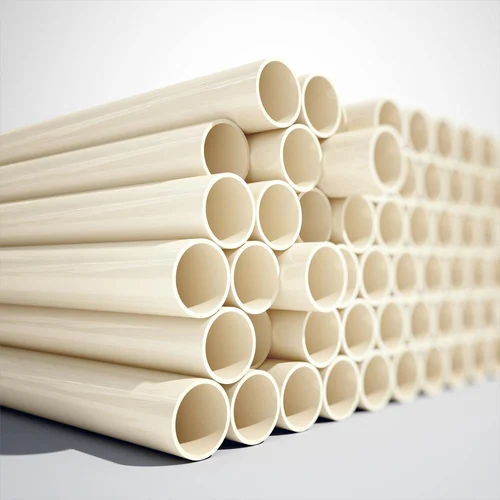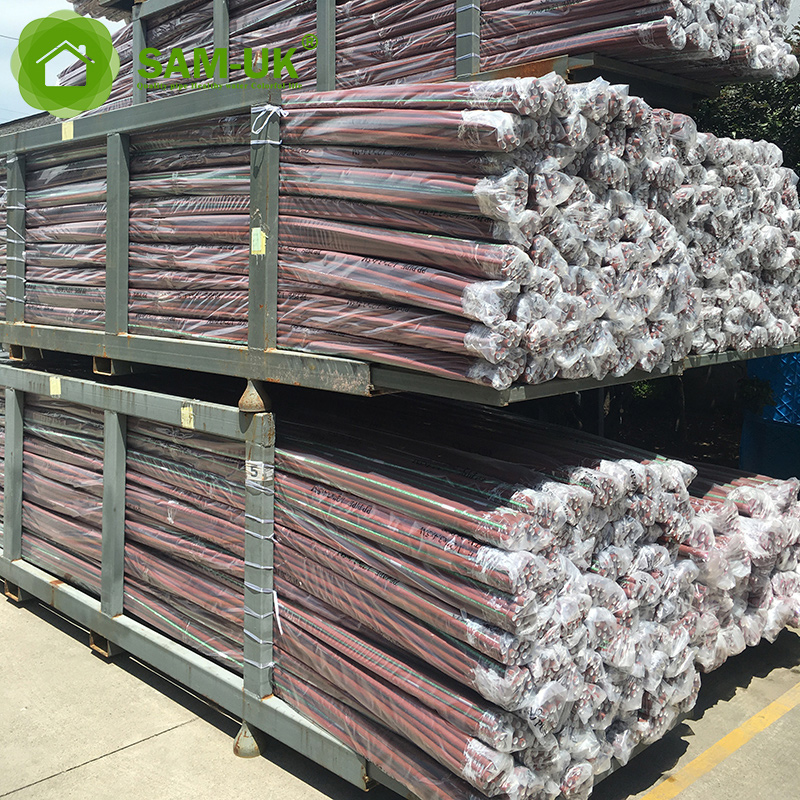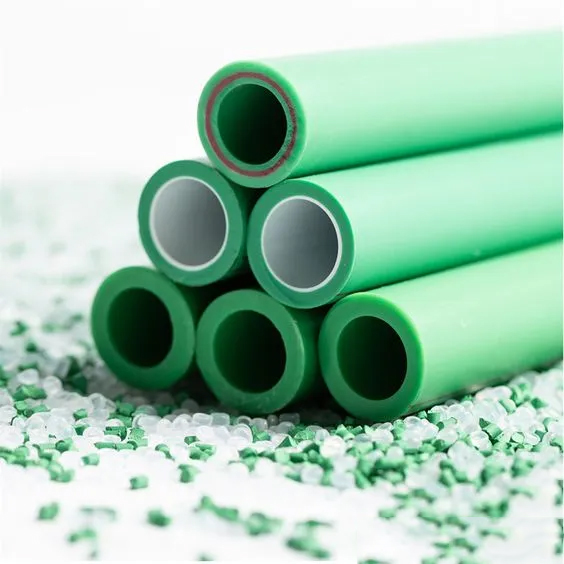Article Introduction
PVC (Polyvinyl Chloride) pipes are widely used in both residential and industrial applications due to their durability, affordability, and resistance to corrosion. Despite these benefits, PVC pipes can sometimes experience unwanted movement or shaking. This issue often arises from water pressure changes, mechanical vibrations, or thermal expansion. If left unaddressed, PVC pipe shaking can lead to excessive noise, wear and tear, and even damage to the piping system over time.
In this article, we will explore the common causes of PVC pipe shaking and provide practical solutions how to keep PVC Pipe from shaking.

Causes of PVC Pipe Shaking
Understanding the causes of PVC pipe shaking is crucial for implementing effective solutions. Below are some of the most common reasons that contribute to this issue:
1. Water Hammer
What It Is: Water hammer occurs when water suddenly stops or changes direction in the PVC pipe, causing a pressure surge. This rapid change creates a loud banging noise and can lead to significant PVC pipe shaking.
Common Causes: Quickly shutting off faucets or valves, malfunctioning appliances (e.g., washing machines, dishwashers), and fast-closing solenoid valves can all trigger water hammer.

2. Thermal Expansion and Contraction
What It Is: PVC pipes expand and contract as they heat up and cool down due to water temperature changes. This can cause the PVC pipes to move, leading to rattling and shaking.
Common Causes: Hot water flowing through PVC pipes, particularly in areas where there are significant temperature fluctuations, often results in expansion and subsequent contraction as the PVC pipes cool.

3. Vibration from Mechanical Equipment
What It Is: Mechanical equipment like pumps, compressors, or motors that are connected to a PVC pipe system can transmit vibrations, causing the PVC pipes to shake. This is especially common in industrial settings.
Common Causes: Poor isolation of vibrating equipment from the piping system, as well as old or malfunctioning equipment, can increase the transmission of vibrations to the PVC pipes.

4. Loose Fittings and Supports
What It Is: If the PVC pipe fittings or supports are not installed securely, PVC pipes can move when water flows through them or during temperature changes. This movement can cause PVC pipes to rattle or shake.
Common Causes: Improper installation, aging clamps or straps, or missing supports along the PVC pipe run are key contributors to this issue.

5. High Water Pressure
What It Is: Excessively high water pressure can cause PVC pipes to vibrate and shake, especially when the flow is abruptly stopped. Over time, this can lead to PVC pipe wear and even rupture.
Common Causes: Poor regulation of water pressure in the system, either due to faulty pressure regulators or lack of pressure control, can result in increased vibration and shaking.
By addressing these root causes, you can implement the right measures to prevent PVC pipes from shaking, ensuring a quieter and more durable system.

How to Keep PVC Pipe from Shaking
There are several effective strategies to prevent PVC pipes from shaking and maintain a stable plumbing or industrial system. Below are detailed solutions:
1. Use PVC Pipe Clamps or Straps
Purpose: PVC Pipe clamps or straps are essential for holding PVC pipes securely in place. They reduce movement caused by water flow, vibrations, and thermal expansion.
How to Apply: Install clamps or straps at regular intervals along the PVC pipe’s length. For horizontal pipes, place clamps every 3-4 feet, and for vertical pipes, space them every 6-8 feet. Ensure that the clamps fit snugly but still allow for slight movement due to thermal expansion.
2. Install PVC Pipe Supports
Purpose: PVC Pipe supports help carry the weight of the PVC pipe and reduce sagging or swaying, which can lead to movement.
How to Apply: Use hangers, brackets, or saddles to support PVC pipes, especially for longer runs. These supports should be installed at appropriate intervals based on the PVC pipe diameter, material, and system requirements.

3. Add Foam Insulation or Cushioning
Purpose: Foam insulation or cushioned clamps can absorb vibration and prevent the PVC pipe from rattling or shaking. They are also useful for reducing noise caused by water flow.
How to Apply: Wrap foam insulation around the PVC pipe or use cushioned clamps. This is especially effective for PVC pipes that are near vibrating equipment or where noise is a concern.

4. Use Expansion Joints
Purpose: Expansion joints accommodate the thermal expansion and contraction of PVC pipes, preventing movement that could lead to shaking.
How to Apply: Install expansion joints at key locations where temperature changes are significant, particularly in systems with hot water. Expansion loops or bellows can also be used to absorb the PVC pipe’s thermal movement.

5. Tighten Fittings
Purpose: Loose fittings are a common cause of PVC pipe shaking. Ensuring that all connections are tight prevents the PVC pipe from rattling during water flow or mechanical vibrations.
How to Apply: Check all joints, fittings, and couplings along the PVC pipe for any looseness. Tighten or replace worn-out parts as needed to keep the system secure.

6. Install Vibration Dampeners
Purpose: Vibration dampeners or absorbers reduce the transmission of mechanical vibrations to PVC pipes, particularly from pumps or motors.
How to Apply: Install dampeners near vibrating equipment or at points where the equipment connects to the pipe system. Ensure proper isolation to prevent vibration from reaching the PVC pipe.

7. Prevent Water Hammer
Purpose: Water hammer can cause significant shaking and noise in PVC pipes. Installing water hammer arrestors helps to cushion the shock caused by sudden pressure surges.
How to Apply: Install water hammer arrestors near fixtures or appliances that cause rapid water shutoff, such as washing machines or dishwashers. This will help absorb the energy and prevent shaking.

8. Reduce Water Pressure
Purpose: High water pressure can exacerbate pipe shaking. By regulating the pressure, you can reduce the force that causes PVC pipes to vibrate.
How to Apply: Use a pressure regulator or adjust the water pressure in your system to stay within the recommended range (typically 40-60 psi for residential systems). This will help stabilize the PVC pipes and prevent excessive vibration.

By using these techniques, you can effectively stop PVC pipes from shaking, reduce noise, and ensure the longevity of your piping system.
How to Know If Your PVC Pipe Is Shaking
Identifying PVC pipe shaking early can prevent potential damage and more significant issues in the plumbing or industrial system. Here are several ways to know if your PVC pipe is shaking:
1. Listen for Unusual Noises
What to Notice: Shaking PVC pipes often produce noticeable sounds, such as banging, rattling, or clanking. These noises typically occur when water is turned on or off quickly, or when certain appliances like dishwashers or washing machines are running.
What It Indicates: Sudden or recurring noises may indicate water hammer, loose fittings, or inadequate pipe supports, all of which can cause shaking.

2. Observe Visible Movement
What to Notice: Look for any visible signs of pipe movement, especially when water is flowing through the system. This can be a slight shaking, rattling, or swaying of the PVC pipes, particularly in unsupported sections or near mechanical equipment.
What It Indicates: If the PVC pipes are visibly moving, it may mean that the clamps or supports are insufficient or that thermal expansion is causing the PVC pipe to shift.

3. Check for Leaks or Loosened Joints
What to Notice: Leaks, especially around fittings and joints, can be a sign that shaking has caused parts of the PVC pipe to loosen or shift. Shaking can gradually weaken connections, leading to water leaks.
What It Indicates: Loose fittings or joints may be the result of continuous PVC pipe vibration, which can damage seals and cause leaks.

4. Monitor Water Pressure Surges
What to Notice: Sudden changes in water pressure, such as a sharp drop or increase when turning on a faucet, may cause PVC pipes to shake. High water pressure can also exacerbate this issue.
What It Indicates: Water hammer or high water pressure could be the underlying cause of the shaking. Installing a pressure regulator or water hammer arrestor may help stabilize the system.

5. Feel for Vibration Near Equipment
What to Notice: When touching the PVC pipes near mechanical equipment such as pumps or motors, you might feel vibrations or a slight shaking. These vibrations may travel through the piping system, especially if the equipment isn’t properly isolated.
What It Indicates: Mechanical equipment may be transmitting vibrations through the PVC pipe system, which can lead to shaking.

6. Inspect for Misaligned or Loose Supports
What to Notice: If you notice gaps between the PVC pipe and its supports or clamps, or if the supports appear misaligned, this could be contributing to the PVC pipe shaking. Poor installation or worn-out supports allow PVC pipes to move more freely.
What It Indicates: Misaligned or missing supports are a common cause of PVC pipe shaking, especially in longer PVC pipe runs.

By staying alert to these signs, you can detect PVC pipe shaking early and take corrective actions before it leads to more significant issues like leaks, damage, or noise disturbances.
Maintenance Tips
Regular maintenance is key to keeping PVC pipes stable and preventing future shaking. Here are several maintenance tips that can help you ensure your PVC pipe system remains secure and in good working order:
1. Perform Regular Inspections
Why It Matters: Frequent visual checks can help you catch potential problems, such as loose fittings, worn-out clamps, or sagging pipes, before they lead to major issues like shaking or leaks.
What to Do: Inspect your PVC pipes every few months, focusing on areas where the PVC pipe is supported or where it connects to mechanical equipment. Look for any signs of wear, looseness, or movement.

2. Check and Tighten Fittings
Why It Matters: Over time, PVC pipe fittings and joints may loosen due to vibration or thermal expansion. Loose fittings can cause PVC pipes to shake and rattle.
What to Do: Periodically check the tightness of all fittings and couplings. Tighten any loose connections and replace any worn-out seals or gaskets that might be contributing to instability.

3. Inspect and Adjust PVC Pipe Supports
Why It Matters: Properly installed PVC pipe supports ensure the stability of the pipe system. If supports become loose or are spaced too far apart, they can lead to sagging or shaking.
What to Do: Make sure that all pipe clamps, straps, and hangers are secure and correctly spaced. Adjust or replace any supports that are loose, missing, or showing signs of wear.

4. Maintain Water Pressure
Why It Matters: High water pressure can lead to excessive vibration and shaking in the PVC pipes. Consistently monitoring and maintaining proper pressure levels will reduce these effects.
What to Do: Regularly check your water pressure using a pressure gauge, ensuring it remains within the recommended range (typically 40-60 psi for residential systems). If the pressure is too high, consider installing a pressure-reducing valve.

5. Flush PVC Pipes to Prevent Blockages
Why It Matters: Blockages in the PVC pipe can lead to pressure buildups, which can cause the pipes to shake when the blockage is released. Regular flushing ensures smooth water flow and reduces this risk.
What to Do: Periodically flush the PVC pipes, especially in areas with hard water or mineral buildup, to keep water flowing smoothly and avoid sudden pressure surges that can shake the PVC pipes.

6. Lubricate Expansion Joints
Why It Matters: Expansion joints are designed to absorb thermal expansion and contraction. Over time, these joints may wear or become stiff, leading to less flexibility and increased shaking.
What to Do: Inspect and lubricate any expansion joints to ensure they continue to function properly. If they show signs of wear or damage, replace them to avoid stress on the piping system.

7. Address Water Hammer Issues Promptly
Why It Matters: Water hammer can cause repeated shaking and banging in the PVC pipes, which can lead to long-term damage if left unaddressed.
What to Do: If you notice water hammer, install a water hammer arrestor to cushion the shock. Regularly inspect existing arrestors to ensure they are functioning correctly.

8. Replace Worn-Out or Old PVC Pipes
Why It Matters: PVC pipes can degrade over time due to environmental factors, pressure, and usage. Old or damaged pipes are more prone to shaking and leaks.
What to Do: If your system is old or shows signs of wear, consider replacing sections of PVC pipe. This will not only stop shaking but also help avoid potential leaks or bursts.

By following these maintenance tips, you can keep your PVC pipes stable, prevent unnecessary shaking, and extend the lifespan of your plumbing or industrial piping system. Regular attention to these areas will ensure smooth operation and help avoid costly repairs down the line.
Conclusion
PVC pipes are an essential component of many plumbing and industrial systems due to their durability and affordability. However, if not properly secured and maintained, they can shake and rattle due to a variety of causes such as water hammer, thermal expansion, or vibrations from mechanical equipment. Uncontrolled shaking can lead to damage, noise, and inefficiencies within the system.
By implementing the appropriate solutions—such as using pipe clamps, installing supports, adding insulation, and addressing issues like high water pressure and loose fittings—you can significantly reduce or eliminate shaking in PVC pipes. Regular maintenance is also key to ensuring the long-term stability and functionality of the piping system.
With proper attention to these factors, you can maintain a quieter, more reliable PVC pipe and fittings system that operates smoothly and avoids future problems, ensuring both efficiency and longevity.
If you have any questions, or are looking to learn more about how PVC pipe and fittings can benefit your plumbing system, contact our teamof piping systems consultants!

About SAM-UK
SAM-UK are a professional 18+ years manufacturer in producing vinyl building profile products and PVC , CPVC , PPH , PPR , PP pipes and pipe fittings, valves, taps and so on. We own the certificates of SGS\SONCAP\ISO9001\CE\NSF,support color /size customization. Welcome to consult for Catalog and Product. you can contact us at email [email protected]






